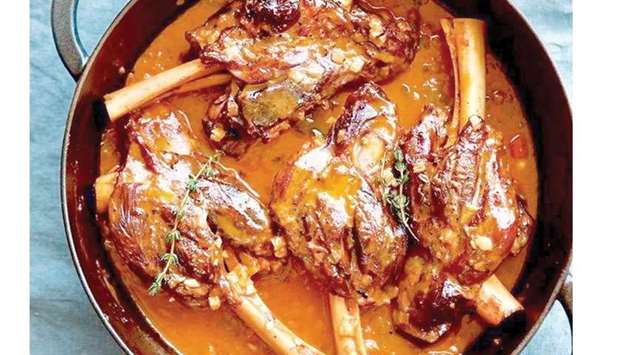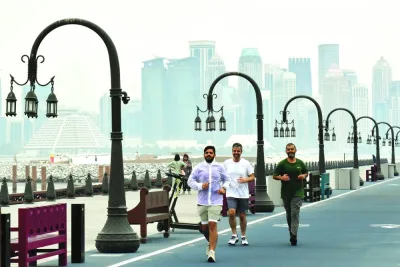The date palms are one of the most commonly grown plantation in Qatar. They are found all over the region and are in abundance especially during Ramadan. Date plantations help combat desertification, offer protection to other crops and are a good source of human nutrition. Dates are the first export product of Qatar, amounting up-to 15,000 metric tones few years back. During holiday season I used to plan visit to dates plantations outside Doha and pluck fresh dates from the trees. My son particularly used to like fresh dates and it was a fun activity for him to pluck dates from the farm an experience a different side of living in Qatar.
Dates are an important source of nutrition in the food diet of the local population in Qatar. Western countries are yet to adapt the nutritious food as a part of their regular diet, but they are becoming more aware about the superfood. Fresh dates are rich in simple sugars like fructose and dextrose. On consumption, they replenish energy quickly to the body. That’s why dates are commonly used to break the fast during the holy month of Ramadan. Prophet Muhammad (PBUH) also used to break his fast by consuming dates.
Dates are low in fat and high in carbohydrates and other elements. Research studies have reported that dates are rich in macro elements mainly potassium, phosphorous, calcium, chlorine and magnesium and have appreciable quantities of micro elements essentially iron, manganese, copper and zinc.
The fruit has antioxidants like beta carotene, lutein, Zena- zanthin and tannins. These antioxidants possess anti-inflammatory, anti-cancer properties. The peak season for dates is from mid autumn through mid winter, October through January in the northern hemisphere. Select plump, shiny dates. Stay away from dates that are too sticky or covered with crystallised sugar.
Most dates will need to be pitted before they can be used for cooking or eating out of hand. When you get ready to pit them, dust your knife blade with flour to prevent the dates from sticking to the knife. You can keep dates wrapped in the refrigerator for up to 3 weeks. Dry dates well packaged in plastic can be refrigerated for 10 to 12 months. The Middle East produces most of the world’s dates. California grows most of the dates produced in North America.
The development cycle of the date fruit is divided into five distinct stages;
1 Habakuk - development of a small white fruit after a week of pollination.
2 Kimri - At about 5-17 weeks there is a visible change of fruit colour and size. The fruit is small and green and slowly turns yellow and red.
3 Khalal - In 18 -25 weeks, the fruit grows longer and turns either fully yellow or red. The fruits are quite hard but can be consumed.
4 Rutab - the fruit ripens in another 5-7 weeks, turns brown in colour and getting ready to be harvested.
5 Tamr - Three weeks post the rutab stages, the ripened fruit is harvested.
The date palm can tolerate high levels of salinity and is relatively drought resistant than other fruit trees. These characteristics make it suitable to be cultivated in the arid regions of the world.
The crop was ranked as one of the high research priority for agricultural research in the Central and West Asia and North Africa region by national research institutions in the Gulf countries.
Eating large quantities of food immediately after fasting is not healthy for the body, which is in a weakened condition. Since dates are a slow digesting food, they keep one fuller for longer and give the body time to digest their essential nutrients. They also kick-start the body’s digestive process and give it energy to process more complex foods. No wonder they are known as a superfood in eastern cultures.
Dates also make a great ingredient for different dishes due to their rich nutrition and naturally sweet taste. orange and date salad, cinnamon roasted fig, orange and date tartlets and spicy carrot and ginger soup, date brownies, date smoothies are some of my favourites, and I will be sharing more delicious Ramadan recipes over the next week.
Lamb shank with dates and chickpeas
Ingredients
Lamb shanks 4 nos
Olive oil 2 tbsp
Chickpeas 1 cup
Garlic 3 cloves
Ginger, chopped ½ tbsp
Coriander powder ½ tsp
Paprika powder ½ tsp
Nutmeg powder 1/ tsp
Lemon juice 11 tbsp
Tomato paste ½ cup
Black pepper to taste
Salt to taste
Onion 1 no
Celery 2-3 stalk
Cinnamon stick 2 nos
Dates, chopped 1/3 cup
Lemon wedge 4 nos
Method
Wash and soak the chickpeas overnight
In a blender combine garlic, ginger, coriander, nutmeg, lemon juice, tomato paste, salt and pepper and make a paste
Heat oil in a heavy bottom vessel, add lamb shanks and cook until golden brown on both sides, transfer the lamb from the vessel and keep aside
Add onion and celery to the vessel and cook until light golden
Stir in the spice paste and cook for 2 minutes
Add chickpeas and water and reduce the heat, and gently simmer for 45 minutes
Preheat oven to 325 degree Fahrenheit, add lamb shank and cinnamon stick to the vessel
Cover and cook until lamb is tender and completely cooked
Add chopped dates and cook for 15 minutes
Serve hot garnished with lemon wedge along steamed rice.
* Chef Tarun Kapoor, Culinary Mastermind, USA. He may be contacted at [email protected]

TRADITIONAL: Lamb shank with dates and chickpeas is served with steamed rice. Photo by the author


